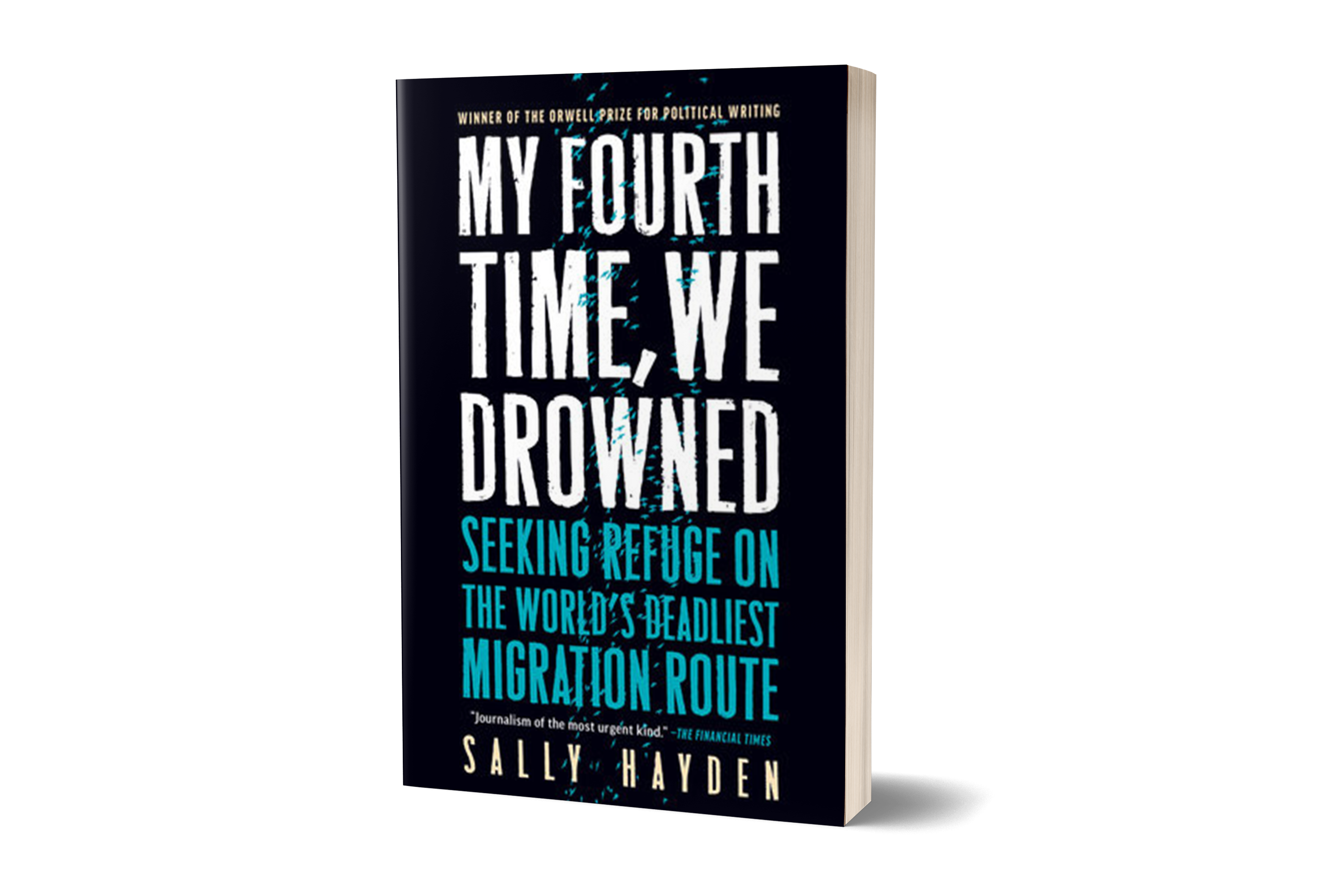After months of negotiation, a group of U.S. senators unveiled a bipartisan “border security” plan in February 2024. “Our immigration laws have been weak for years,” declared Sen. James Lankford (R-OK), one of the proposal’s lead negotiators, in a press release. “This is a once-in-a-generation opportunity to close our open border and give future administrations the effective tools they need to stop the border chaos and protect our nation.”[1] To stop the “chaos,” Lankford and his fellow senators proposed placing additional burdens on asylum seekers while allocating billions of dollars to fund immigration enforcement, detention facilities, and border wall construction.
Centrists touting the proposal boasted of how many concessions they made to their right-wing colleagues. President Biden and Democratic party members went on record agreeing with their opponents’ policy prescriptions—abandoning progressives in pursuit of so-called “border security.”[2]
While laws enacted in the 1990s created the contemporary immigration enforcement regime, [3] most high profile—if ill-fated—“reforms” have at least gestured towards addressing the status of people left behind or marginalized by the current system and its laws. A “pathway to citizenship” for some undocumented people has been a prominent feature of past proposals that paired immigration reform with resources for border security (i.e., militarization). [4] That pretense of concern for people and improving their material circumstances is gone. It is now bipartisan consensus that the U.S. has a “border crisis.” Instead of addressing people’s needs, political leaders’ solutions to this crisis (as they’ve defined it) are designed to increase migrants’ suffering.
Such cruelty was not isolated to the U.S.-Mexico border either. The Senate proposal was part of a broader package that included billions of dollars to support Israel’s ongoing genocidal actions in Gaza[5], exemplifying the immense violence of this legislative effort.
The Senate deal didn’t go far. Former President Trump—sensing that any effort to address the situation, no matter how draconian, would threaten his election chances—opposed the bill and lawmakers lined up behind him. Only four Senate Republicans initially voted for the bill[6] and Speaker Mike Johnson declared the proposal “dead on arrival” in the House.[7] In U.S. immigration politics-as-usual, any efforts to make the country’s immigration system more humane must be paired with far more resources to harden its borders. The former almost never occurs, outside of some presidents’ insufficient executive actions that can be—and have been—reversed.[8] Meanwhile, since 2003, the government has nearly tripled funding to its enforcement agencies.[9]
“Border security” thus remains a top priority for the U.S. and governments around the world, rather than the people who cross borders who have already been subjected to violence, war, climate catastrophes, and economic distress. Border-crossing migrants are treated as pawns in a rhetorical game between political parties with no interest in addressing the 21st century’s actual crises.
The nature and pervasiveness of the “border crisis” narratives underwriting this politics require reexamination. Such narratives are used to justify border regimes rooted in White Christian hegemony and colonialism. Two recent books about border politics—one theoretical and holistic, the other more granular and journalistic, offer some food for thought.

John Washington’s The Case for Open Borders (Haymarket, 2024) makes a cogent and compelling case for ending the border regime. “The call for open borders is not a pie-in-the-sky dream but an urgent response to the reality that closed-borders advocates deny: people move and will not stop moving,” Washington notes early, recognizing the brutality and global inequality that borders both create and reinforce. “To expect them to, or try to stop them, is to incite misery, enormous and futile expenditure, and war. To try to stop humans from moving is to try to stop humans from being human,”[10] he says. The author pairs his on-the-ground reporting and experience living in the U.S. borderlands with leading scholarship, ably summarizing histories of colonization and the establishment of contemporary borders while demonstrating their impacts on individual lives through interviews with migrants and asylum seekers from around the world.
In one chapter, Washington examines histories of European colonialism and the mutability of borders when they serve White supremacist goals. Of particular focus is “White Australia,” official policies that British colonists and the Australian government enacted throughout the 20th century to exterminate, dispossess, and enslave Aboriginal people.[11] Such policies were the cornerstone of Australia’s post-World War II “populate or perish” campaign to encourage White settlement and industry across the continent. It wasn’t until 1992 that the Australian High Court finally voided the legal framework of “terra nullius” that fostered violent settlement and conquest for over ninety years. Aboriginal land rights were finally officially recognized, but “[i]t was too late. The land was taken. The borders had been conjured and weaponized,” Washington writes. “The fiction of the border had taken on, and was living, a life of its own.”[12]
Colonial powers may make such legal acknowledgements generations too late, but the violence of border enforcement lasts. Washington goes on to address border regimes’ adverse effects with chapters dedicated to political, environmental, and economic arguments for opening borders. The economic arguments are the least useful, for reasons Washington readily admits in the chapter’s introduction. Reducing migrants to their economic output—such as correctly noting that they are “not a drag on the economy”—further dehumanizes by commodifying them.[13] Economic arguments over migration feature heavily in most U.S. immigration debates, with restrictionists and expansionists justifying their respective stances with reams of data and reports. Even as closed-border advocates’ arguments rely on misinformation and selective data, economic arguments for loosening borders or doing away with them entirely often reinforce a system that exploits workers and widens inequality.
Though discussing these economic arguments contextualizes the political debate about immigration, Washington’s book excels when it embraces a more holistic approach. As he notes, open borders “must be part of a more profound readjustment of global politics that includes the abolition of the inequality regime set in place by postcolonial capitalism.”[14] A chapter titled “How Do We Get There?” admirably provides concrete suggestions to work toward that vision.
Washington’s global lens—necessary for envisioning a world without borders—isn’t a close examination of the movements and institutions upholding and hardening current borders. Instead, The Case for Open Borders is, as its author writes, a “more discursive, winding, descriptive, historical, and sometimes personal”[15] book. Though its argument that borders have failed us is compelling, the book would benefit from more consideration of what we’re up against.
Washington’s book focuses on the United States, he says, “not only because I live here as a citizen of the country and because I know and have crossed its borders far more than those of other countries, but also because the United States has a unique immigration history.”[16] The history is indeed unique, but the horrors and contradictions of continued border enforcement are not, as another recent book makes clear.

My Fourth Time, We Drowned: Seeking Refuge on the World’s Deadliest Migration Route (Melville House, 2022), by Irish journalist and author Sally Hayden, details the recent history of deadly European border controls by reporting on migrants’ harrowing journeys from Africa. The primary setting is Libya, where several migration routes from eastern and western Africa converged amid a violent power struggle following the 2011 revolution and Muammar Gaddafi’s killing. Though Hayden examines the role of global powers and institutions—namely, the EU and various United Nations agencies’ efforts to halt migration across the Mediterranean—her book focuses squarely on the perilous situations that African migrants experience because of Europe’s closed borders.
Global migration routes are exceedingly dangerous, with thousands dying or gone missing annually.[17] In crafting a narrative about global migration to Europe, Hayden presents powerful first-person migrant testimonies. A direct message from an Eritrean man incarcerated in a migrant detention center in Tripoli leads Hayden to these underreported stories, drawn from interviews with hundreds of refugees and migrants from Ethiopia, Sierra Leone, Sudan, and elsewhere across Africa. As a London-based journalist, Hayden notes that, “Unexpectedly, my geographic distance from Libya was exactly the reason that refugees trusted me to do this.”[18]
Hayden’s reporting from the continent also captures the abusive and deadly conditions inside Libyan detention centers like Abu Salim, a long-term detention and torture site notorious for a 1996 massacre killing hundreds of political prisoners.[19] Many detainees were placed in these facilities after their attempts to cross the Mediterranean were intercepted by the Libyan Coast Guard in EU-funded interceptions beginning in 2017. The book details such actions in pursuit of “Fortress Europe”—a strategy carried out with little transparency by well-compensated bureaucrats, and that ultimately proved ineffective in keeping migrants away.
Although Hayden doesn’t make many comparisons to U.S. policy regarding migrants travelling across South and Central America—understandably, given her location and those of her sources—many of the same cruel border and detention policies persist in this country. Just as European officials support Libyan authorities to intercept boats crossing the Mediterranean, U.S. officials rely on Mexican authorities to stop migrants before they reach the U.S. southern border.[20] Those who manage to reach the U.S. border are subject to detention, often in for-profit facilities, a policy President Biden campaigned on ending but has since expanded.[21] Every migrant who makes a perilous border-crossing journey despite undergoing such excruciating conditions is a testament to the failures of such half-baked policymaking. “Fortress”-style policies of Europe and the U.S. merely make those conditions worse. Describing herself as a journalist instead of an activist, Hayden doesn’t offer much in the way of policy prescriptions. Instead, her book records European powers’ violence and recognizes the humanity of migrants bearing the brunt of it. “I wanted to write a work of journalism, making sure that this period of time, and this episode of European shame, was documented,” Hayden notes towards the book’s end.[22] On this count, Hayden’s engaging and heart-wrenching work absolutely succeeds.
Immigration and border crisis narratives are a perennial feature of national elections and 2024 has proven no different. For years, U.S. right-wing media has elevated such narratives to the point where lawmakers openly espouse “Great Replacement” conspiracy theories once relegated to the corners of White nationalist discourse.[23] The response to a Republican leader openly quoting Hitler and promising (again) to pursue a campaign of record deportations[24] should not be to pursue the policies demanded by that leader’s party, as President Biden is doing currently.[25] Instead, our society should reject generations of border-hardening policies that inflict harm and create false senses of security. The resources used to shore up those failed policies could be redirected to whole-of-government responses to the realities of our unstable world.
In short, our fragmented globe needs a bold new vision for migration in the 21st century. Washington’s book shows us how it is possible. Hayden’s shows us why it’s so desperately needed.
Endnotes
[1] “Lankford Releases Border Security Package with Huge Wins for Securing the Border,” Sen. James Lankford, February 4, 2024,
[2] Adam Johnson, “The Democrats’ Hard-Right Turn on Immigration Is a Disaster in Every Way,” The Nation, February 8, 2024,
https://www.thenation.com/article/politics/democrats-border-bill-wrong/.
[3] Cameron Gokee, Haeden Stewart, & Jason De León,“Scales of Suffering in the US-Mexico Borderlands,” International Journal of Historical Archaeology (December 2020), https://doi.org/10.1007/s10761-019-00535-6. The 1996 Illegal Immigration Reform and Immigrant Responsibility Act (IIRIRA) established much of today’s immigration system. It created new barriers for asylum seekers and legal frameworks for mass deportation and immigrant criminalization/incarceration. IIRIRA and other policies of that decade came to be known as “Prevention-Through-Deterrence,” which massively increased federal spending on border enforcement, with minimal effect on migration rates.
[4] William A. Galson, “The collapse of bipartisan immigration reform: A guide for the perplexed,” Brookings, February 8, 2024, https://www.brookings.edu/articles/the-collapse-of-bipartisan-immigration-reform-a-guide-for-the-perplexed/.
[5] Richard Cowan and Costas Pitas, “US Senate unveils $118 billion bill on border security, aid for Ukraine, Israel,” Reuters, February 5, 2024, https://www.reuters.com/world/us/us-senate-unveils-118-billion-bipartisan-bill-tighten-border-security-aid-2024-02-04/.
[6] “Roll Call Vote 118th Congress - 2nd Session,” United States Senate, February 8, 2024, https://www.senate.gov/legislative/LIS/roll_call_votes/vote1182/vote_118_2_00039.htm.
[7] Stephen Groves, Mary Clare Jalonick, and Lisa Mascaro, “Senate Republicans Resist Advancing on Border Policy Bill, Leaving Aid for Ukraine in Doubt,” AP News, February 7, 2024,
https://apnews.com/article/congress-border-security-ukraine-a39e188fa2c6a563203d2c69eaabdc6d.
[8] Michelle Waslin, “The Use of Executive Orders and Proclamations to Create Immigration Policy: Trump in Historical Perspective,” Journal on Migration and Human Security, 2020, Vol. 8(1), https://journals.sagepub.com/doi/pdf/10.1177/2331502420906404.
[9] “The Cost of Immigration Enforcement and Border Security,” American Immigration Council, January 2021,
https://www.americanimmigrationcouncil.org/sites/default/files/research/the_cost_of_immigration_enforcement_and_border_security.pdf. This refers to funding for Customs and Border Protection and Immigration and Customs Enforcement.
[10] John Washington, The Case for Open Borders (Haymarket Books, 2024), 10–11.
[11] “Aboriginal,” as used within the book, is one of a few broad terms that group together the First Nations people of mainland Australia and several other islands. There is no consensus on an encompassing term, as many communities and individuals prefer to use more specific terms.
[12] Washington, 33.
[13]Washington, 68.
[14] Washington, 166.
[15] Washington, 14.
[16] Washington, 3.
[17] “Deaths During Migration Recorded Since 2014, By Region of Incident,” Missing Migrants Project, Accessed February 2024, https://missingmigrants.iom.int/data.
[18] Sally Hayden, My Fourth Time, We Drowned: Seeking Refuge on the World’s Deadliest Migration Route (Melville House, 2022), xviii.
[19] Evan Hill, “Libya survivor describes 1996 prison massacre,” Al Jazeera, October 21, 2011, https://www.aljazeera.com/features/2011/10/21/libya-survivor-describes-1996-prison-massacre/.
[20] Nick Miroff, “Facing new record border surge, Biden again turns to Mexico,” Washington Post, December 21, 2023, https://www.washingtonpost.com/immigration/2023/12/21/biden-mexico-border-surge/.
[21] Ted Hesson, Mica Rosenberg, and Kristina Cooke, “Biden vowed to reform immigration detention. Instead, private prisons benefited,” Reuters, August 7, 2023, https://www.reuters.com/world/us/biden-vowed-reform-immigration-detention-instead-private-prisons-benefited-2023-08-07/.
[22] Hayden, 371.
[23] Matt Gertz, “A brief history of the right-wing media’s incendiary border ‘invasion’ talking point,” Media Matters for America, January 31, 2024, https://www.mediamatters.org/immigration/brief-history-right-wing-medias-incendiary-border-invasion-talking-point.
[24] Charlie Savage, Maggie Haberman, and Jonathan Swan, “Sweeping Raids, Giant Camps and Mass Deportations: Inside Trump’s 2025 Immigration Plans,” The New York Times, November 11, 2023, https://www.nytimes.com/2023/11/11/us/politics/trump-2025-immigration-agenda.html.
[25] Michael D. Shear, “How Biden’s Promises to Reverse Trump’s Immigration Policies Crumbled,” The New York Times, October 6, 2023, https://www.nytimes.com/2023/10/06/us/politics/biden-trump-immigration.html.

